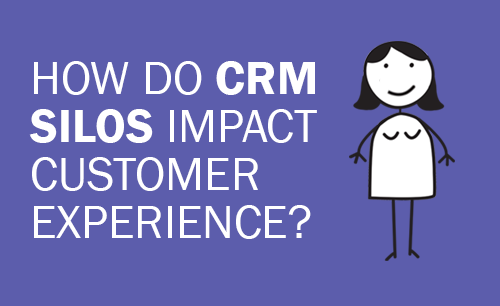How CRM silos impact the customer experience

A recent report from Hypatia Research Group highlights how Customer Relationship Management (CRM) software has become business critical to every organisation. However, the study, Next Generation CRM: All about Business Process Excellence points out a key issue with many existing CRM implementations. Essentially, while they act as a database for tracking customers, what they have bought and what their preferences are, it is very difficult to get this data out and share it around the wider enterprise.CRM therefore becomes a silo, trapping information so that it can’t be exchanged with other applications, such as customer service, analysis or forecasting systems.
Hypatia’s report stresses the positive advantages of linking CRM data to business processes to create a workflow that runs across the organisation. There is a lot of sense in this as two trends have fundamentally changed the customer/provider relationship:
1. The customer is everyone’s responsibility Firstly, most companies understand that everyone, in every department, is responsible for the success of the customer relationship in some way. From frontline retail shop employees and logistics managers all the way through to marketing, finance and production staff, anyone whose actions and role impact the customer journey is involved in making the relationship successful. To do their jobs properly they need access to the right customer information, right now.
2. We live in a multichannel world At the same time customers are more active, across more channels than ever before. They want the flexibility to change channels during the same transaction and expect organisational structures to make this simple and seamless. What they don’t want is to have to repeat themselves multiple times when they change channel and interact with different staff.
Take the example of a retailer. A customer buys something while on business in Hong Kong through a loyalty scheme. When they land back in the UK they find that there’s an issue with the product and return it to a local branch of the same retailer. From the customer point of view it is straightforward – the name above the door is the same in Hong Kong and London, so why should there be an issue?
However from the corporate side, there’s a wide variety of systems (and even individual companies) involved. CRM systems in local subsidiaries need to be able to talk to each other instantly to validate what has happened and to enable an exchange or refund to take place, without delaying the customer and potentially causing frustration. Similar issues also occur between different channels, with many companies still not geared up to cope with goods bought online being returned in-store.
Situations such as these are exactly where CRM silos cause unnecessary issues. If, instead each local CRM system talks to each other through a central customer engagement hub information can be joined up in real-time, leading to a seamless experience for the customer that will deepen the relationship. Happier, engaged consumers are more likely to share more information about themselves, enabling more targeted offers that benefit both retailer and consumer.
As Hypatia stresses, CRM systems have become central to how organisations store customer information. However, as the customer becomes everyone’s responsibility, now is the time to open them up and share information across the organisation in order to deliver the superior, multichannel customer experience that consumers are looking for.







Comments